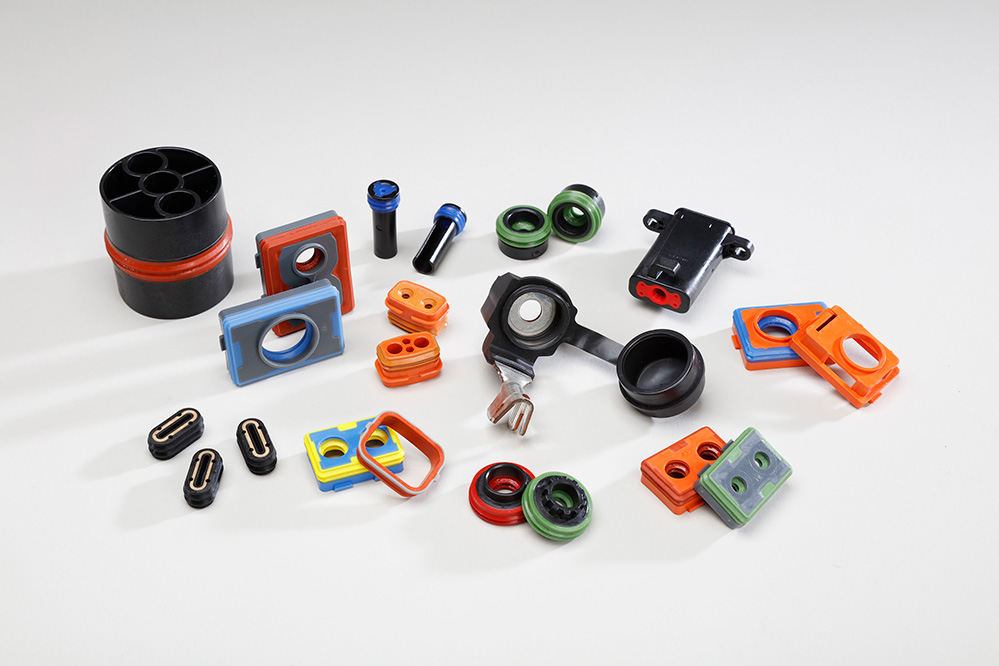
Innovation has always been at the core of product development, driving industries to explore new techniques and materials. One such revolutionary method gaining popularity is plastic overmolding. This process offers endless possibilities for designers, enabling them to create products with enhanced functionality, aesthetics, and durability. This article will delve into the world of plastic overmolding, exploring its advantages, applications, and future trends.
What is Plastic Overmolding?
Plastic overmolding is an injection molding process where two or more materials are combined to create a single component. It involves molding a base material and then over-molding it with a second material, typically a soft elastomer, to form a final product. The process allows manufacturers to combine the properties of different materials, resulting in a product with superior characteristics.
Advantages of Plastic Overmolding
3.1 Enhanced Product Durability
Plastic overmolding enhances product durability by providing an additional layer of protection. The soft overmolded material absorbs shocks and vibrations, reducing the risk of damage and extending the product's lifespan.
3.2 Design Flexibility
One of the most significant advantages of plastic overmolding is the design flexibility it offers. Designers can experiment with various textures, colors, and materials, enabling them to create visually appealing and ergonomic products.
3.3 Cost-Effectiveness
Contrary to popular belief, plastic overmolding can be a cost-effective solution. By strategically using overmolding, manufacturers can eliminate the need for secondary assembly processes, reducing production time and labor costs.
3.4 Improved Ergonomics
Overmolding allows for the creation of products with ergonomic grips and comfortable touchpoints. This is particularly beneficial in industries like consumer electronics and medical devices, where user comfort is of utmost importance.
The Plastic Overmolding Process
4.1 Material Selection
Choosing the right materials is crucial in plastic overmolding. The base material must have excellent bonding properties with the overmold material. Common combinations include ABS with TPE, and PC with silicone.
4.2 Mold Preparation
Before the overmolding process, the molds need to be prepared. Proper mold design and preparation play a significant role in achieving high-quality overmolded parts.
4.3 Injection Molding
The base material is first injection-molded to create the primary component. This pre-molded part will serve as the substrate for the overmolding process.
4.4 Overmolding
In this stage, the pre-molded part is placed into the mold cavity, and the overmold material is injected around it. The two materials bond together, forming a cohesive and strong final product.
4.5 Cooling and Ejection
After the overmolding process, the part undergoes cooling to ensure that both materials solidify and fuse properly. Once cooled, the finished product is ejected from the mold.
Industries Benefiting from Plastic Overmolding
5.1 Consumer Electronics
The consumer electronics industry benefits greatly from plastic overmolding. It allows for the integration of buttons, grips, and seals, improving product usability and aesthetics.
5.2 Automotive
Automotive manufacturers use plastic overmolding to create soft-touch interior components, improving the overall driving experience for consumers.
5.3 Medical Devices
In the medical field, plastic overmolding is utilized to design ergonomic and biocompatible devices that are comfortable for both patients and healthcare professionals.
5.4 Household Appliances
Household appliances often incorporate plastic overmolding to enhance user comfort and safety while maintaining a sleek and modern design.
Overcoming Design Challenges
6.1 Material Compatibility
Ensuring compatibility between the base and overmold materials is crucial for product integrity. Extensive material testing and analysis are required to achieve successful overmolding.
6.2 Part Design and Complexity
Designing parts with complex geometries can be challenging. Manufacturers must carefully consider the mold design and material flow to avoid defects and achieve uniform overmolding.
6.3 Quality Control
Maintaining quality control throughout the overmolding process is essential to detect any defects or inconsistencies and ensure the final product's reliability.
Sustainability and Recycling Considerations
As sustainability becomes a significant concern for industries, plastic overmolding offers a greener alternative. By using recycled materials and optimizing the manufacturing process, the environmental impact can be minimized.
Future Trends in Plastic Overmolding
The future of plastic overmolding looks promising, with ongoing research to develop new materials, improve bonding techniques, and enhance the efficiency of the process. Expect to see more innovative designs and applications across various industries.
Conclusion
Plastic overmolding has revolutionized product design and manufacturing, offering innovative solutions and endless possibilities for designers and manufacturers alike. The process's ability to combine different materials while providing enhanced functionality and aesthetics makes it a game-changer in multiple industries. Embracing plastic overmolding allows businesses to create products that stand out in the market, setting new standards for durability, ergonomics, and user experience.
FAQs
10.1 What is the difference between overmolding and insert molding?
Overmolding involves molding a base material and then over-molding it with a second material to form the final product. Insert molding, on the other hand, involves inserting pre-formed parts into the mold, which are then over-molded with the second material.
10.2 Can any plastic material be used in overmolding?
No, not all plastic materials are suitable for overmolding. The base and overmold materials must have compatible properties for a successful bond.
10.3 Is plastic overmolding suitable for high-volume production?
Yes, plastic overmolding can be used for high-volume production. It streamlines the manufacturing process, reducing production time and costs.
10.4 How does plastic overmolding contribute to reducing product weight?
Plastic overmolding allows for the use of lightweight materials in specific areas, reducing the overall weight of the final product without compromising on strength and durability.
10.5 What are the main considerations for selecting an overmolding partner?
When selecting an overmolding partner, consider their experience, expertise in material selection, mold design capabilities, and quality control processes to ensure a successful and reliable production process.